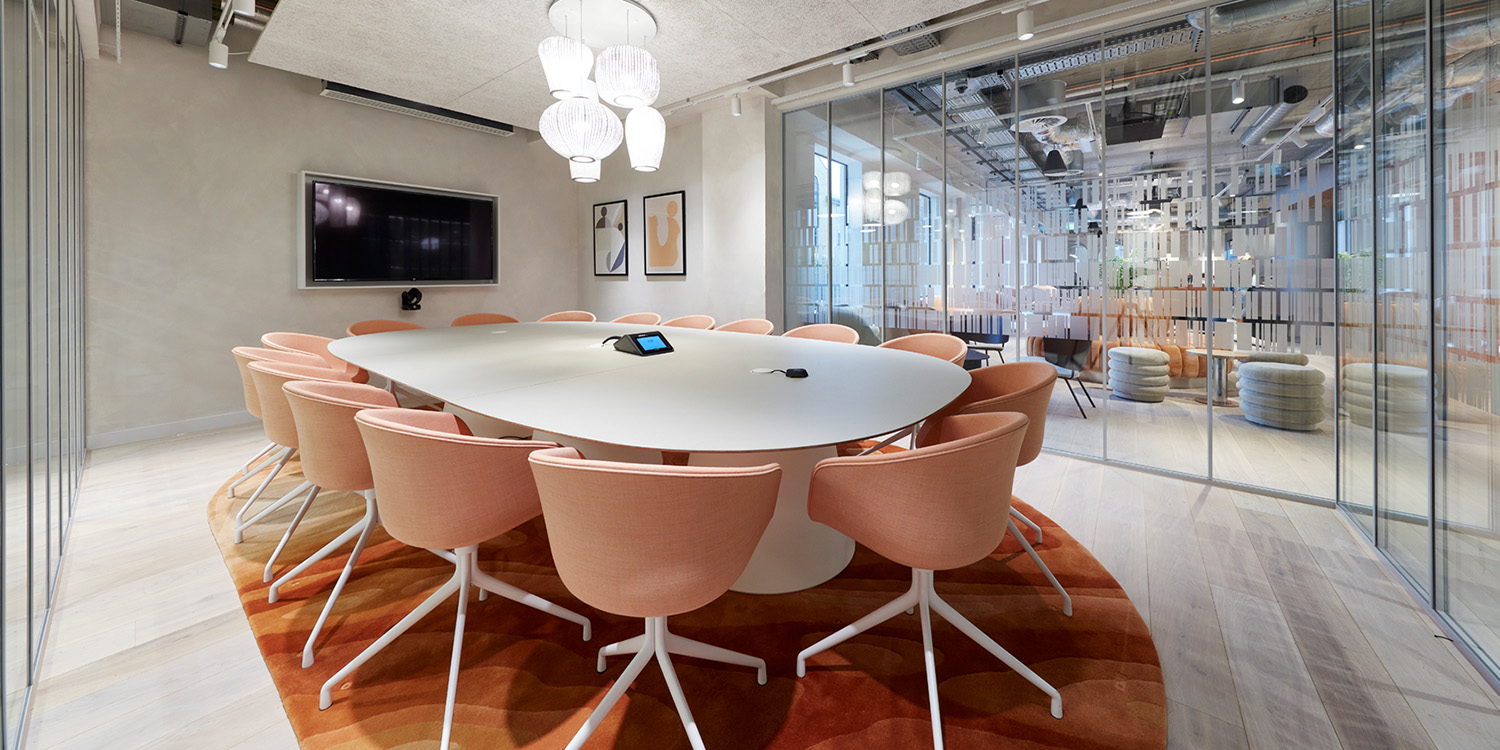Find out why meeting room hire is not a thing of the past in the shared workspace.
In recent years, we have all become familiar with the flexible hybrid model that allows your team to work in a way that best suits the individual. This might mean that an employee sometimes works at home and sometimes in the office but could also mean that the team structure is hybrid, with some employees working from your company’s workspace and some remotely.
A 2022 Zippia study found that hybrid work increases productivity when implemented thoughtfully, as evidenced by the 63% of high-growth companies that have embraced it.
So far, so good for the hybrid proposition.
There have been some challenges navigating the complexities of hybrid meetings, particularly around how to conduct them in a way that is equally beneficial to all attendees, irrespective of their location.
We designed our locations to maximise the hybrid experience, from the shared workspace to the meeting rooms. Whilst we offer excellent complimentary refreshments like Nespresso pods, TeaPigs and mini brownies for those participating in-house, we want to ensure that, whether in London or Edinburgh, Cheltenham or Brussels, hiring a Clockwise meeting room means a seamless and equitable experience for all attendees.
Audio and visual excellence has never been so critical as it is to successful hybrid meetings. When hiring a meeting room with Clockwise, the space will always come equipped with Crestron video conferencing technology. Simple to use with your platform of choice – from Microsoft Teams to Zoom – it guarantees a consistent and high-quality A/V experience.
But beyond the technology, what are some points to consider when looking to make your hybrid meetings more productive?
Whilst certainly not an exhaustive list, here are our five best practices for valuable virtual collaboration:
- A mindfully designed, clear agenda is the first step to structuring a hybrid meeting to ensure maximum impact – it needs to account for all participants, both remote and in-person. Timings should be considered and all equipment tested ahead of the meeting. Communicating the agenda to all participants before the meeting also helps manage expectations.
- Make use of a facilitator. This individual will not only keep the meeting on track but also ensure that contributions from the remote participants aren’t missed, that the agenda points are being hit and that engagement between the hybrid team is smooth.

Clockwise Bristol
- With participant contributions in hybrid meetings, don’t rely on people just jumping in as they might if everybody was in-person. Allow time for each team member to contribute and be sure to directly ask them for feedback and thoughts.
- If collaborating on activities or projects during the meeting, use the same collaborative technology – Miro’s virtual whiteboard is a great addition to hybrid meetings. On the subject of technology, consider making the remote participants full-sized and/or having their voices come from the same direction as the visual to make their physical presence felt.
- Interestingly for an article on how to conduct productive hybrid meetings, one thing to keep in mind is that a meeting isn’t always the answer – realising when those times are can generate the most productive outcome of all. With all manner of tools on-hand now, asynchronous communication is sometimes better for a hybrid team, particularly one in different time zones.
Our meeting rooms are available to hire for both members and non-members. Designed to create a seamless hybrid experience for tiny team huddles or full company get-togethers, we take care of all the arrangements, leaving you free to focus on the business at hand.
Find out more about hiring a meeting room to make your hybrid meetings more productive with Clockwise.




